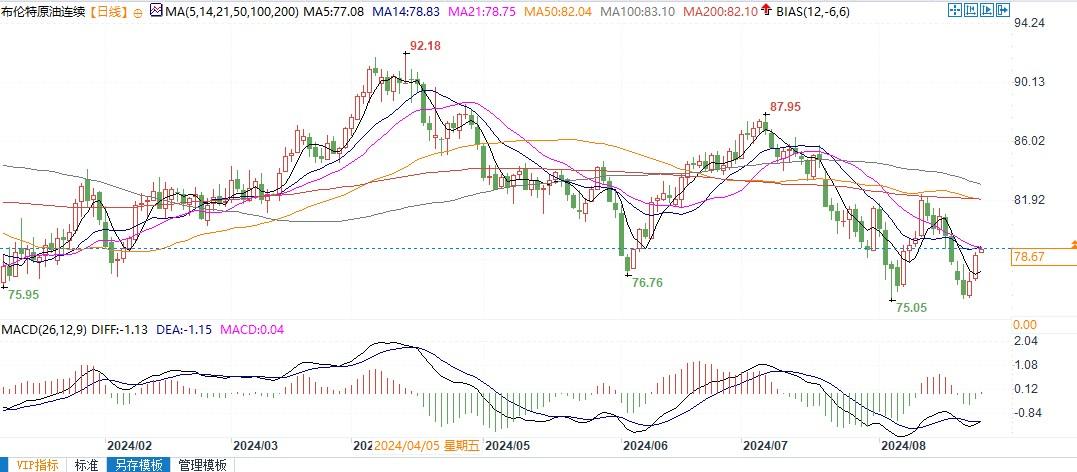Delay production increase or OPEC+is the most cautious choice until the economy is confirmed to continue recovering!
On August 25th, crude oil analyst Julianne Geiger stated that as OPEC+prepares for its next meeting, it finds itself at a crossroads that could impact the global oil market. As autumn approaches, the key decision of whether to continue increasing production as planned or maintain the current level of production is urgent. The background of this decision is uncertain global economic conditions, fluctuating oil demand forecasts, and tight oil inventories, especially in the United States.
Global oil inventories tighten, demand forecast worrying
Analyst John Kemp recently wrote that data from the Organization for Economic Cooperation and Development (OECD) shows that as of June, commercial inventories of crude oil and finished oil in developed economies were significantly lower than the ten-year seasonal average. Specifically, these inventories are 120 million barrels, 4% lower than the 10-year average, which is the most severe oil shortage in the past two years.
In the United States, this situation is even more pronounced. In the past few weeks, US crude oil inventories have been on a downward trend, with even a sharp decline in July and August. According to data from the US Energy Information Administration (EIA), as of August 16th, US crude oil inventories have decreased by 34.6 million barrels in the past eight weeks, the second largest seasonal decline in the past decade. This decline mainly occurred in the Gulf Coast region, a key hub of the global oil market, where inventories decreased by 25 million barrels, far exceeding the average fuel consumption rate during the same period.
Despite the continuous tightening of inventory, demand forecasts remain worrying. Recently, the International Energy Agency (IEA) lowered its forecast for global oil demand growth in 2025, citing weaker than expected recovery in global manufacturing and freight activities. This revision comes amid widespread concerns about the health of the global economy, with many analysts pointing out that economic activity has slowed down since April.
This slowdown has led people to be more cautious about the outlook for oil consumption in the coming months. Although some market observers predict that central banks, including the Federal Reserve, may cut interest rates to stimulate economic growth, the timing and impact of these measures remain uncertain. OPEC+must carefully weigh these factors when deciding whether to increase production, as increasing production may exacerbate the current supply-demand imbalance and lead to further decline in oil prices.
OPEC faces strategic dilemma, the most cautious approach may be to postpone production increase
The decision faced by OPEC+is not just about balancing supply and demand; This is also to maintain market share and cohesion within the group. Saudi Arabia and its allies are implementing several production cuts since the end of 2022 to consume excess inventory and support prices. These reduction measures have been successful to some extent, but the challenge facing the group now is whether to cancel these measures as planned or extend them to prevent inventory from accumulating again.
One key issue is that non OPEC oil producing countries may lose market share. The United States, Canada, Brazil, and Guyana have all increased their production, and if OPEC decides to stop increasing production, it will pose a competitive threat to OPEC+. In addition, some OPEC+member countries may break the norm by unilaterally increasing production, further complicating the organization's efforts to manage supply.
From a tactical perspective, current market indicators present a mixed picture. Kemp pointed out that although the six-month calendar spread of Brent crude oil shows a moderate spot premium, indicating a tightening market, other price indicators such as refinery profit margins have weakened. Adjusted for inflation, Brent crude oil futures prices have also declined, averaging $79 per barrel in August, lower than $84 in November 2023. This decline reflects the increasing uncertainty in the market regarding future demand and the possibility of further economic weakness.
Hedge funds and other market participants have also significantly reduced their positions in crude oil and fuel futures, reflecting a cautious attitude amid increasing uncertainty. If OPEC+decides to increase production as planned, it may bring further downward pressure on oil prices. On the contrary, delaying production increase may trigger a short-term rise in oil prices.
Crude oil analyst Julianne Geiger said that the most cautious approach for OPEC+may be to postpone production increases until there is clearer evidence of sustained economic recovery and stronger oil demand. However, if the group is confident in the long-term prospects of the oil market, it may choose to continue increasing production, betting that the market can absorb additional supply without causing a significant drop in oil prices.
The next few weeks are crucial for OPEC+as it prepares to take the next steps. The outcome of this decision will not only shape the future of the global oil market, but also test OPEC's ability to manage supply in an increasingly uncertain economic environment.

Brent crude oil daily chart
Tips:This page came from Internet, which is not standing for FXCUE opinions of this website.
Statement:Contact us if the content violates the law or your rights
